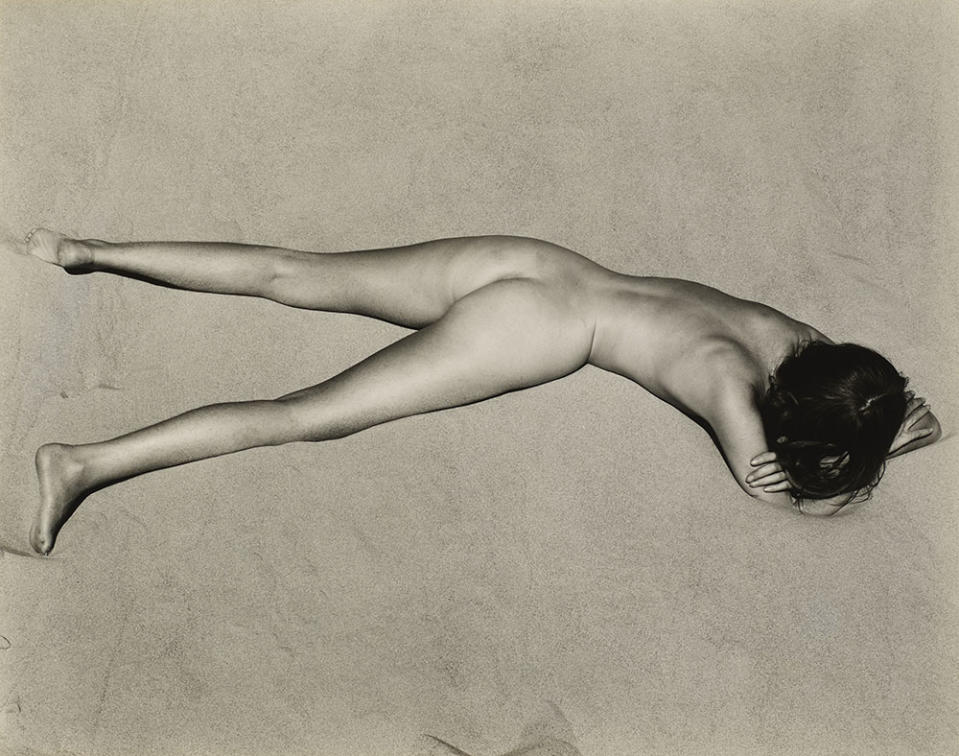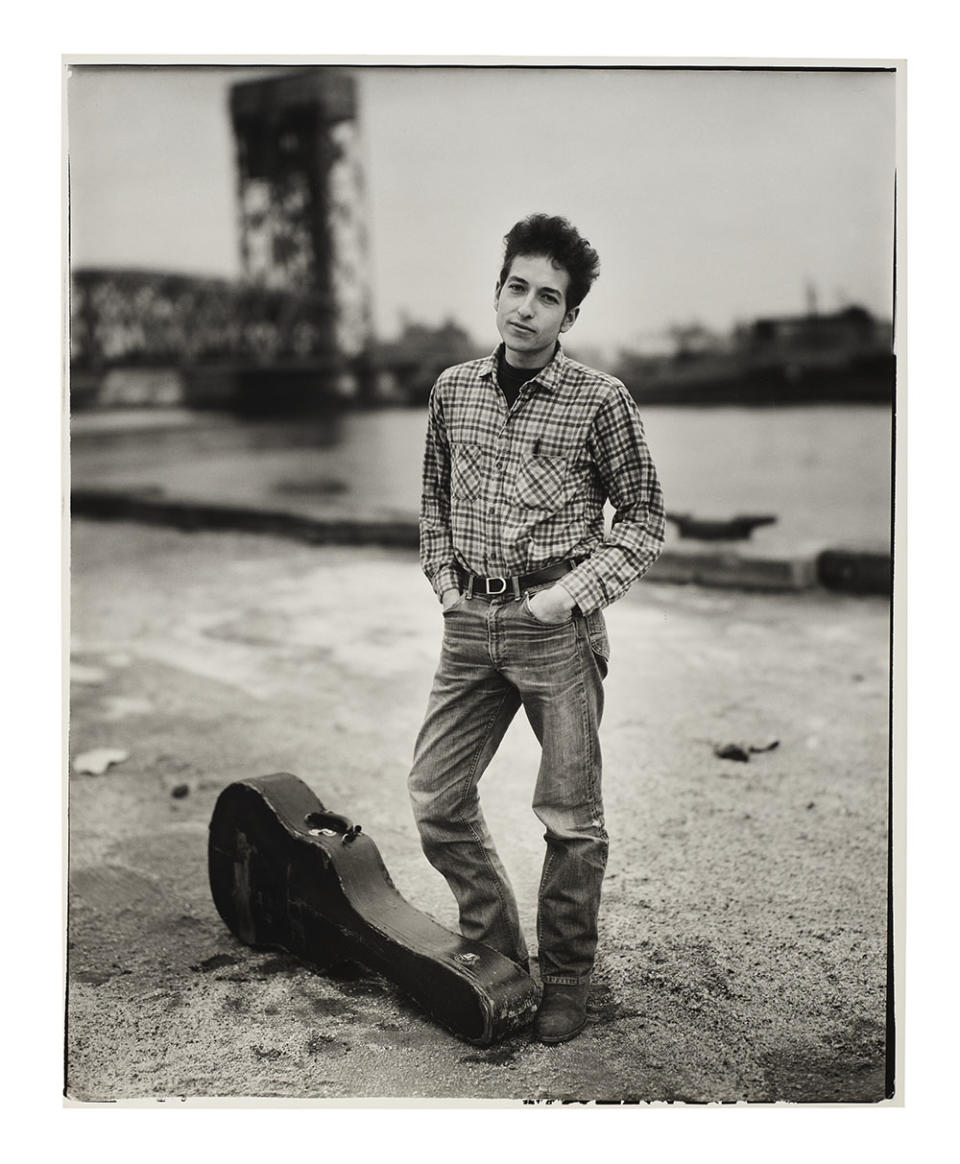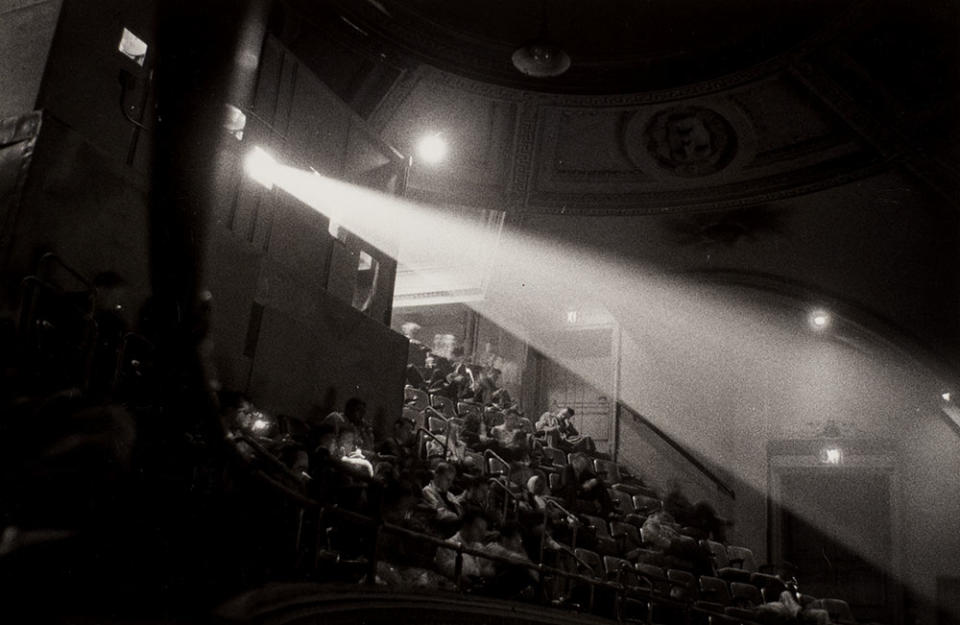Richard Gere Photography Collection to Sell at Christie’s (Exclusive)
- Oops!Something went wrong.Please try again later.
- Oops!Something went wrong.Please try again later.
- Oops!Something went wrong.Please try again later.
- Oops!Something went wrong.Please try again later.

Richard Gere hesitates to call the scores of photographs he has acquired over the years as a proper collection. “I just started buying things that I liked,” he tells The Hollywood Reporter in a phone interview, “and I suppose it’s a collection, but I don’t see myself as a collector.”
Yet when he recently went into Christie’s auction house in New York City to view around 40 of his photos displayed in a room, he felt moved seeing so many of them together. “It was objectively beautiful. It resonated so much with me. I’ve been living with them for 40 years and they are much deeper than just an image you see in a magazine or a book to me,” says the actor.
More from The Hollywood Reporter
Robert Allan Ackerman, Acclaimed Director for Stage and Television, Dies at 77
Why Noto, Sicily Is Becoming a Hot-Spot Travel Destination for Hollywood
Christie’s isn’t being so unassuming in promoting its upcoming online auction of the works (which runs from March 23 to April 7) trumpeting it as “Photographs from the Richard Gere Collection.”
“Honed by years both in front of and behind a camera, Gere’s passion for image-making and collecting is on full view in this wonderfully diverse collection. These are artists who are masterful at capturing and eliciting human emotion, which resonated with Gere, as an actor,” says Darius Himes, Christie’s international head of photographs. “On display are highlights from the collection signifying a reflection of his time spent in Los Angeles, his admiration of 20th century photographers and the friendships he made along the way.”
156 lots are included in the sale, which carries a low estimate of just under $2 million and was headed by Christie’s photographs specialist Joslin Van Arsdale. The pieces span the history of the medium, beginning with photographs by 19th-century pioneers such as Gustave Le Gray and Carleton Watkins and moving onward to pieces by early 20th-century icons such as Tina Modotti, Edward Weston, Manuel Álvarez Bravo and Alfred Stieglitz.

CHRISTIE'S IMAGES LTD. 2022
Says Gere of Le Gray’s work, “He was shooting in the 1850s and 1860s. It was really the birth of photography and it was difficult to shoot horizons, and he found a way of putting negatives together, so his seascapes are extraordinary. One of my favorites of his is a picture of Napoleon the Second at a bivouac with his army and a horse is prominent. It’s kind of a dream-like, ghosted image from the early 1860s that is really extraordinary.”
More recent masters who are represented range from Robert Frank and Walker Evans to Joel Peter Witkin, Diane Arbus, Irving Penn, Graciela Iturbide, Horst P. Horst, Frederick Sommer, Weegee, Duane Michaels, Robert Mapplethorpe, Peter Beard, Richard Avedon, and Sally Mann. “One of my favorites is Irving Penn, who I met several times. I was completely absorbed in his work and his platinum prints are just extraordinary,” says Gere.

CHRISTIE'S IMAGES LTD. 2022
Highlights from the auction will be on public view at Christie’s Los Angeles gallery (336 N. Camden Drive, Beverly Hills) from March 23 to 26.
(The actor also sold a collection of more than 100 guitars with Christie’s back in 2011, which in total sold for $936,000. “I played all those guitars and they all meant something to me,” recalls Gere.”)
Gere began collecting photography early in life with his friend Herb Ritts, even before the latter had embarked on a career as a photographer. “I was in my mid-to-late 20s. Herb Ritts, who was one of my close friends, and I would go to these photo auctions and at that point in L.A., you could get really incredible photographs for a couple hundred dollars. We’re talking 45 years ago. Herb and I just enjoyed encountering these incredible prints as objects, not just as images and looking at printing processes and paper,” says Gere. (Ritts’s iconic 1977 photos of Gere, taken at a gas station in the desert, launched the photographer’s career.)
Gere — who recently listed a 50-acre estate in the Hudson Valley that he’s owned for more than two decades for $28 million — also spoke to THR about the movie he just started filming (his first in three years) and talked more about his love of photography.
I read that you recently started shooting a film that also stars Diane Keaton, William H. Macy, Luke Bracey, Susan Sarandon and Emma Roberts. What was it like to go back to filming?
I just started five days ago and I hadn’t shot, I think, in almost three years, and it’s so bizarre to be doing what we used to do completely naturally without thinking about it. It’s about three couples and they are all in some level of chaos interacting with themselves and with each other.
Beyond the imagery contained in the photos you’ve collected, what attracts you about the printing processes involved in photography?
The early processes were very delicate and ephemeral. They were salt prints. They were bromide. They were daguerreotypes. They experimented with all kinds of things that would allow an image to emerge from paper, to attach to paper and sometimes they were attached to metal [as with] daguerreotypes.
Did you ever go through phases as far as the types of photos you were interested in?
I kind of went through a period where I liked the [early] photographers who did more painterly like things, which were the 19th century and early 20th century photographers who were really trying to mimic paintings. And then there were experimenters who just weren’t interested in that. They weren’t telling stories in the same way; they had a deep sense of the face and eyes. Irving Penn certainly has an incredible sense of bodies, of bodies in space.

CHRISTIE'S IMAGES LTD. 2022
How did your interest in photography first spark?
I was always interested in photography from the first Brownie camera that I had when I was a kid. I had a fascination with film, of getting back negatives, which doesn’t happen anymore, seeing contact sheets and then later on deciding how to print them and what process. I’ve tried many different processes of my own photographs, from salt to platinum to silver and almost anything in between. That’s kind of been baked into me, an interest in images, whether it’s a dream-like suggested moment to one that’s definitive. The process itself of film is really interesting. There’s nothing really there. It’s just grain or in the current process it’s just ink that’s shot onto paper, but there’s nothing really there. It’s just suggestions and the mind creates images and stories. The brain creates the images.
You’ve known some of the photographers whose works you’ve collected. What’s something interesting that they’ve said about the medium?
There was a wonderful story that Herb [Ritts] told me about [photographer] Helmut Newton. He was talking to Herb about the camera and he said, “You know, the image is not in the camera.” And then he pointed to his head and his heart and said, “It’s here.”

